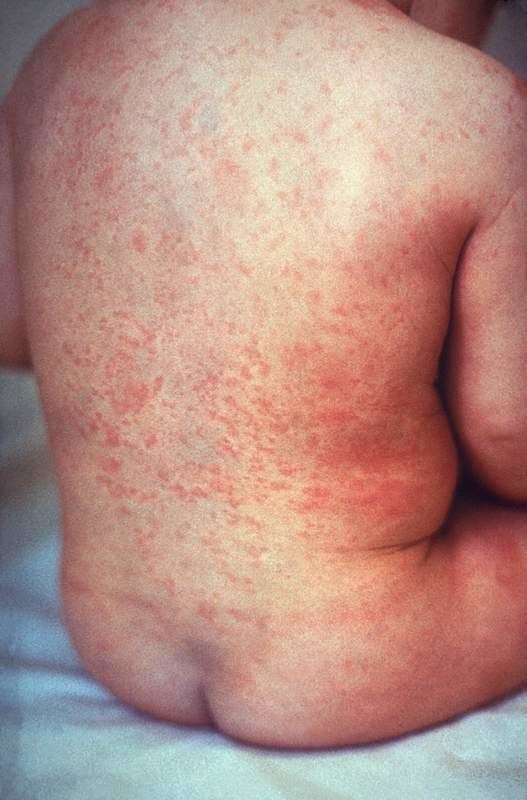Specialty family medicine ICD-9-CM 034, 055-057, 782.1 MeSH D005076 | ICD-10 A38, B05-B09 DiseasesDB 25831 | |
 | ||
An exanthem or exanthema (from Greek ἐξάνθημα exánthēma, "a breaking out") is a widespread rash usually occurring in children. An exanthem can be caused by toxins, drugs, or microorganisms, or can result from autoimmune disease.
It can be contrasted with an enanthem.
Infectious Exanthem
Historically, six "classical" infectious childhood exanthems have been recognized, four of which are viral. Numbers were provided in 1905.
The four viral exanthema have much in common, and are often studied together as a class. They include:
Scarlet fever, or "second disease", is associated with the bacterium Streptococcus pyogenes. Fourth disease, a condition whose existence is not widely accepted today, was described in 1900 and is postulated to be related to the bacterium Staphylococcus aureus.
Many other common viruses apart from the ones mentioned above can also produce an exanthem as part of their presentation, though they are not considered part of the classic numbered list:
